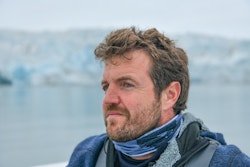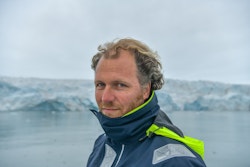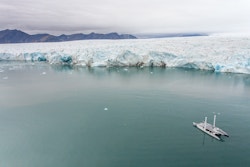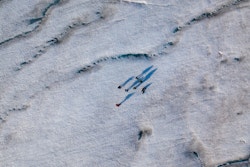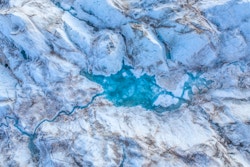Spitsbergen, Norway
Energy Observer has arrived on the island of Spitsbergen in the Svalbard Archipelago at 78° north latitude, powered solely by renewable energies and hydrogen. A historic challenge and a world first!
Coming from: St Petersburg, Russia
Time of arrival: 7:00 AM

Energy Observer in Svalbard
After 5700 km covered from St Petersburg under rough weather conditions and in total energy autonomy, Energy Observer arrived this Saturday, 10th of August, in the Svalbard archipelago, considered by the scientific community as Ground Zero of climate change. For Energy Observer’s crew, this stopover is undoubtedly the most symbolic of their Northern Europe Odyssey.
Why Spitsbergen will mark the history of Energy Observer Odyssey
Proving that it is possible to navigate in total autonomy, in extreme conditions by drawing energy from nature, without any ecological impact.
Since the beginning of the adventure, Energy Observer’s team had dreamed of taking up this challenge: to rally the Arctic in total energy autonomy, without CO2 emissions, fine particles or noise pollution that could disturb the ecosystems, in complete harmony with nature. They did it! The crew of sailors, engineers and embarked reporters can be proud of the progress made since April 2017!

They did it! After almost 6000 km from St. Petersburg Energy Observer arrived this morning in Longyearbyen, capital of the Svalbard, powered only by renewable energies and hydrogen. A world first!
“We sailed from Russia to Spitsbergen in total energy autonomy and demonstrated that our energy mix is the future not only of maritime transport, but also of the new energy networks developed on land. Moreover, in such a remote and yet deeply impacted by climate change region, it is a strong symbol to arrive with this vessel without an internal combustion engine or without the use of diesel unlike any other vessel, including sailboats. It is urgent to act on all fronts! We can’t wait any longer, the next few months are crucial. We really want to show that our resources are not unlimited and that we must cooperate with nature intelligently as we do with our boat: we produce what we consume, we go at the speed that REN’s allows us to reach! »”
Spitsbergen, the Ground Zero of climate change
In less than 20 years, the Arctic has lost 1.6 million square kilometers of ice. This accelerating ice melt has consequences for the local ecosystem, but also for the rest of the globe, in short, medium and long term.
"Our existence is intimately linked to that of glaciers and we too often ignore it." Our meeting with Heïdi Sevestre in Spitsbergen is one we don't forget. Glaciologist and Arctic expert, her research, particularly on the Svalbard glaciers, shows that on land or at sea they are suffering the full brunt of climate change.
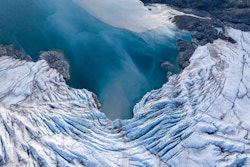
Glacier in Svalbard
“Reaching the Arctic with renewable energies and hydrogen may have seemed impossible, but we have done it. Beyond the technological challenge, it is a political message that we wish to convey. Spitsbergen represents the ground zero, and it is here that the devastating effects of humanity on climate and biodiversity can best be seen. We wanted to prove that if we can sail in an extreme environment thanks to this ship, tomorrow everyone will be able to live thanks to REN’s and we will have a real tool to transform the world. It is true, we are the first to accomplish this feat, but this is not a competition, we are doing our part to raise awareness among citizens, decision-makers and industrialists about the absolute urgency to reconcile man and nature. The decisions we make in the coming years will have an impact on the next millennia.”
Testing innovative technologies in extreme conditions
During the navigation from St. Petersburg, the crew and engineers worked hard on the Oceanwings® wind turbine propulsion wings. These wings, tested for the first time on a vessel of this size, have been optimized thanks to the feedback from sailing in complex weather conditions: little sun, strong headwinds, squalls, adverse seas.
“The challenge of this last phase of navigation, 600 nautical miles between Tromso and Longyearbyen, was to validate the proper functioning of the wings and to push the boat and the entire energy chain to its limits under very harsh conditions! A real strategy game with rotating winds, very little sunshine, changing currents.”

Marin Jarry and Victorien Erussard in Energy Observer
In the Baltic Sea, the wings experienced technical problems with strong headwinds conditions. In the Norwegian Sea, the system was updated with the CNIM and VPLP in a degraded mode on the port wing resulting in manual management of their settings. Finally, in the icy Arctic Ocean, the system further evolved (encoders, sensor debugging, software evolution…) for optimized use during this long crossing.
Thus, Energy Observer continues more than ever her role as a R&D catalyst and continues to contribute in the deployment of innovative and efficient systems for navigation and in particular maritime transport.
Hydrogen once again played its key role in offsetting the intermittency of renewable energies. All the more so in high latitudes where the sun is lower and the cold requires even more precise management of energy costs and life on board.
“It was one of our biggest crossings. In waters at 5°C, it was necessary to take advantage of each technological brick. It is a real first to test the systems in such cold conditions and manage the energy costs for life on board and propulsion.”
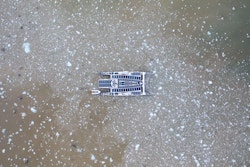
Energy Observer in Svalbard
Pyramiden, the ghost town of Svalbard
A ghost town in Svalbard: Pyramiden, where time has frozen. Founded by Sweden and sold to the Soviet Union in the early 20th century, this mining town of 1,200 inhabitants was abandoned overnight in the late 1990s.
